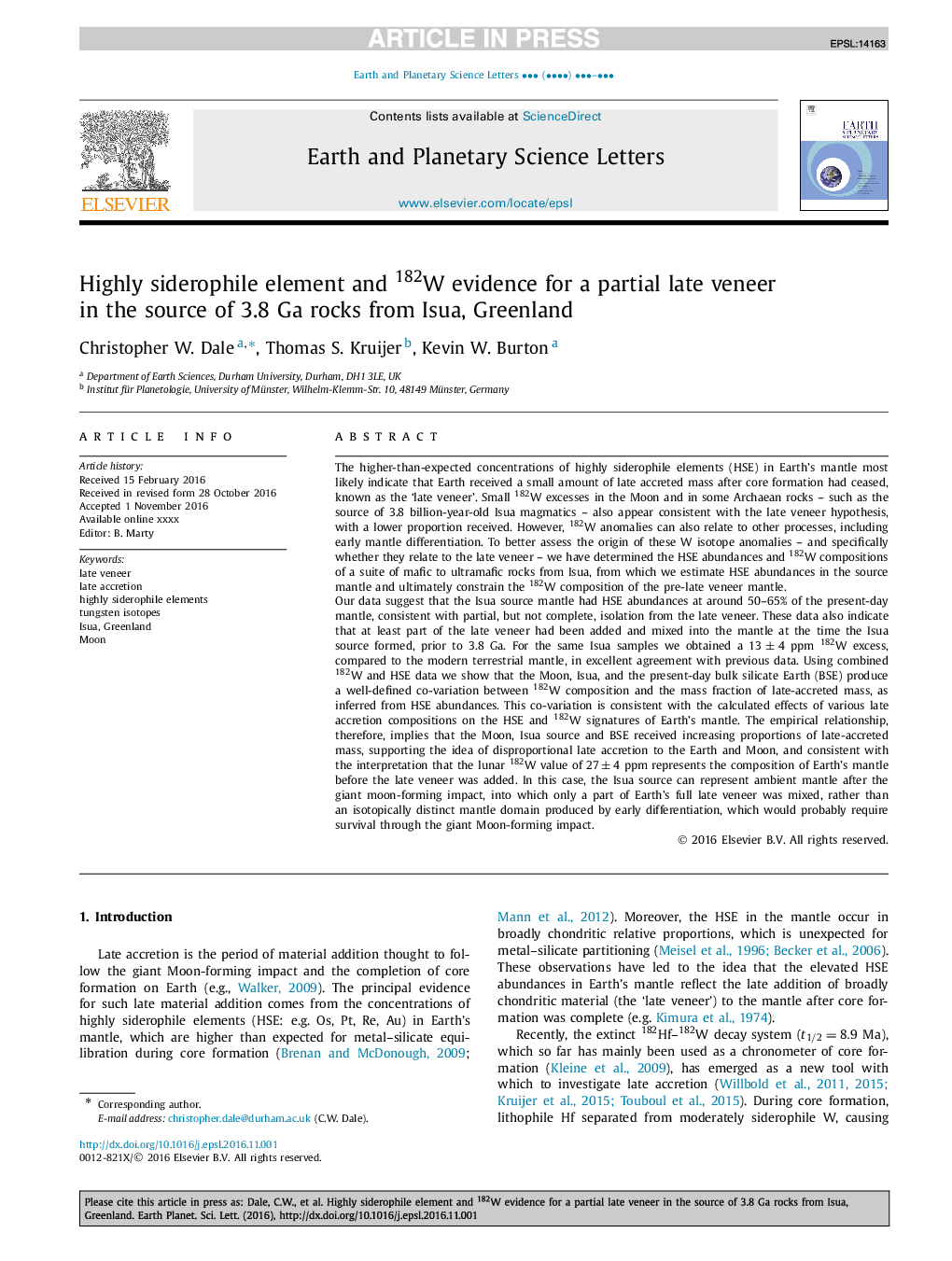| Article ID | Journal | Published Year | Pages | File Type |
|---|---|---|---|---|
| 5780033 | Earth and Planetary Science Letters | 2017 | 11 Pages |
Abstract
Our data suggest that the Isua source mantle had HSE abundances at around 50-65% of the present-day mantle, consistent with partial, but not complete, isolation from the late veneer. These data also indicate that at least part of the late veneer had been added and mixed into the mantle at the time the Isua source formed, prior to 3.8 Ga. For the same Isua samples we obtained a 13±4ppm 182W excess, compared to the modern terrestrial mantle, in excellent agreement with previous data. Using combined 182W and HSE data we show that the Moon, Isua, and the present-day bulk silicate Earth (BSE) produce a well-defined co-variation between 182W composition and the mass fraction of late-accreted mass, as inferred from HSE abundances. This co-variation is consistent with the calculated effects of various late accretion compositions on the HSE and 182W signatures of Earth's mantle. The empirical relationship, therefore, implies that the Moon, Isua source and BSE received increasing proportions of late-accreted mass, supporting the idea of disproportional late accretion to the Earth and Moon, and consistent with the interpretation that the lunar 182W value of 27±4ppm represents the composition of Earth's mantle before the late veneer was added. In this case, the Isua source can represent ambient mantle after the giant moon-forming impact, into which only a part of Earth's full late veneer was mixed, rather than an isotopically distinct mantle domain produced by early differentiation, which would probably require survival through the giant Moon-forming impact.
Related Topics
Physical Sciences and Engineering
Earth and Planetary Sciences
Earth and Planetary Sciences (General)
Authors
Christopher W. Dale, Thomas S. Kruijer, Kevin W. Burton,
